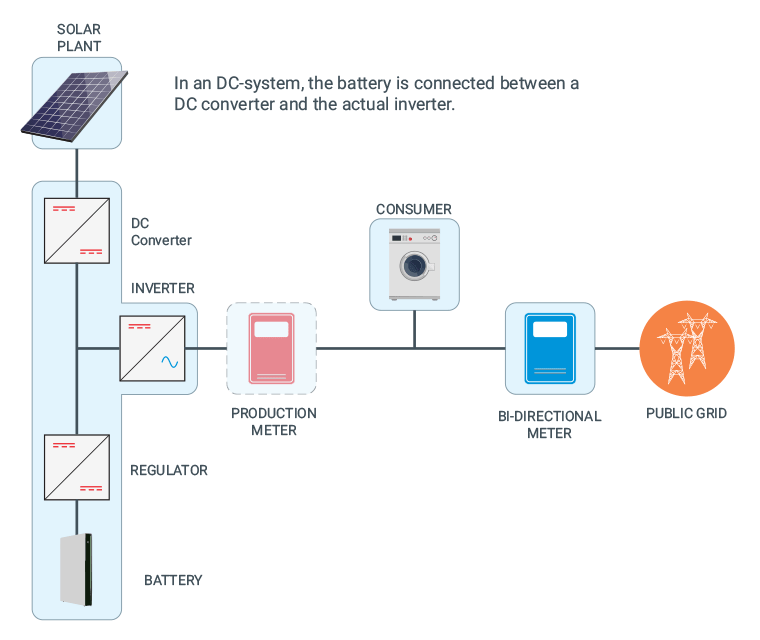How
Solar Batteries Work
How solar batteries work
In a nutshell, battery storage works by storing the excess solar energy from the PV system for night time usage. With the low rates in current export tariffs, this creates more savings and becomes a very beneficial long term investment.
Another salient feature of storage systems is that it protects your house from power outages and helps reduce dependence on grid supply.
- Solar Panels convert sun light to DC electricity
- The inverter converts this to AC, which gets used by home appliances during the day time
- The surplus power generated by the panels, which otherwise gets fed to the grid, is used to charge the batteries
- Once the batteries are full charged, the remaining solar energy is exported to the grid as usual
- The stored energy in the battery gets utilised during the night time and thus ensuring minimal dependence on the grid
AC COUPLED STORAGE

Usually these types of storage can store energy from solar generation as well as from the grid. They are able to provide off-grid power supply even during outages. Comparatively expensive, these allow energy to be drawn from other sources as well. One example is that it can enable home owners to draw power from the grid during lower power tariff time slots.
DC COUPLED STORAGE
One of the most cost-effective systems available in the market right now, with batteries installed between the panels and inverters storing DC power directly from the panels. These are not capable of storing power from the grid. These types of battery are most appropriate when the purpose is to store excess solar energy for night time consumption. But these systems do not provide protection from grid outages. So, if the grid goes down due to any reason, the system also stops working.

BATTERY BRANDS WE INSTALL

Get a Free Quote

